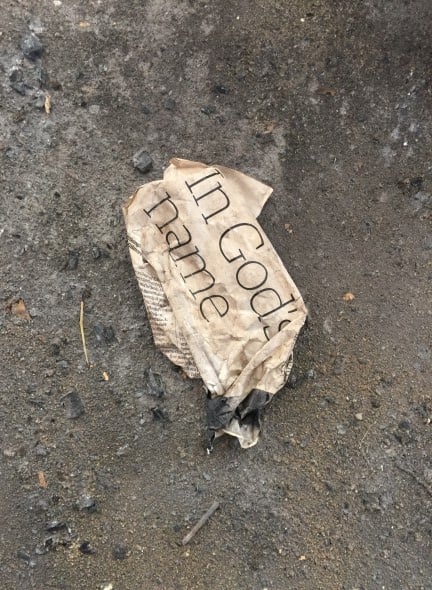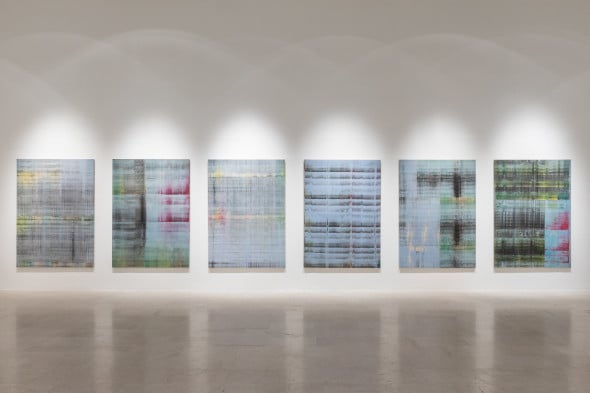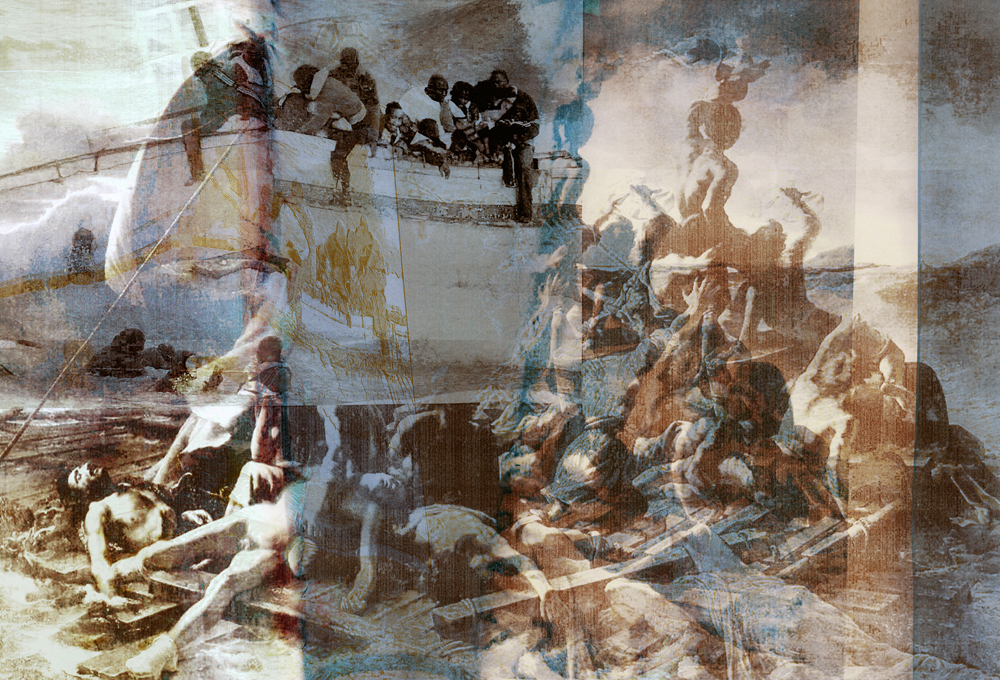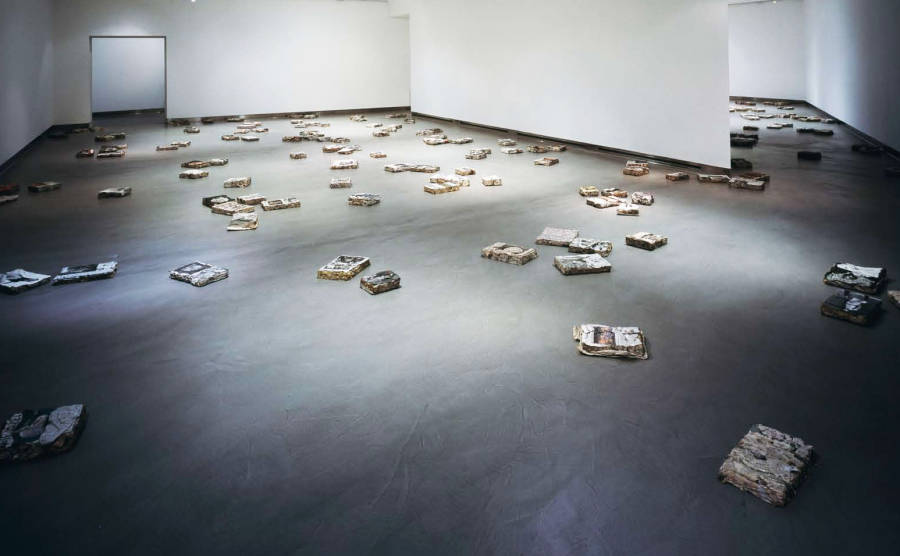When it comes to the relationship between art and media, print reality and collective memory, Gianluigi Colin is a true master. Art Director of Italian national daily Corriere della Sera, Cover Editor of its La Lettura culture supplement and an artist in his own right, Colin dedicates most of his works to the world of news media and to the relationship between the words and images printed by newspapers and how we perceive the world around us.
He performs a sort of “artistic archaeology” that examines various aspects of reality through the lens of journalistic reporting; at the same time, newspaper pages are the raw material with which he creates a new, highly personal language that consists of clippings of photos and articles, sometimes crumpled up and combined with other newspapers or everyday objects.
“My work as an artist also touches upon the news media world but, above all, it examines the sedimentation of sight, time and memory and helps us reflect on the present. I work with the same mindset as an archaeologist who collects evidence, words and images that would otherwise disappear into oblivion.”
Gianluigi Colin

In his latest show which has just ended at the Triennale di Milano, Sudari, Colin exhibited for the first time 16 abstract paintings made from the polyester fabric that is used to clean the rotary presses used to print newspapers. His “roto-pictures” comprise layers of colours that run from grey to green to blue, as well as repeated streaks that seem to symbolise the residual energy of news items that have been removed from both the printing press and our memories.
This work alludes to today’s media world and its endless creation of news, speaking to an audience that has become used to this information overload. The result is a learning process in which information presented by the media is consumed at a frenetic pace and just as quickly forgotten.
Unlike his previous work, with this unusual approach – halfway between print art and abstract art – Colin leaves the fabrics intact and turns them into canvases, highlighting their intrinsic narrative value. These ready-mades retain the blurred traces of the printer’s ink, a vague reminder of the articles they have erased, like trails etched in memory.
“In these canvases, I see the infinite stories of a humanity that’s invisible. Memory suspended in time that is renewed every day: faces of men and women, stories about sad lives superimposed on fragile tales of happiness. But here the present suddenly dissolves: it becomes something shapeless, layers of colours, pure abstraction.”
Gianluigi Colin
The privileged viewpoint of this narrator is that of the journalist, the daily witness of what can be called a double genesis: that of the world, which only becomes intelligible to us through interconnected historical events, and that of reality mediated by the media, which shapes the identity of nations and the lived experience of individuals.

Seen from this perspective, Colin’s canvases are not only a distillation of these two entities but they also show the transience of news, historical events and individual and collective memory. Presented with this dematerialisation of reality, the audience is asked to reflect on the function of journalism, on the cognitive processes that mark our era and on the almost cathartic value of oblivion.
“Colin’s ‘Sudari’ authoritatively depicts the eloquent dissolution of the anxieties, therapies, ambitions, misdeeds, hopes, ventures, dramas, dreams and lies of every day that goes irreversibly by.”
Bruno Corà, curator of the ‘Sudari’ show
The mythology of newspapers is a central theme of other works by Gianluigi Colin, who likes to observe reality through the flow of journalistic words and images. In some of these, the artist combines photos taken from newspapers with famous works of art, evoking the eternal blurring of myth and reality, and the connection between cultural imagination and journalistic representation. Cases in point are The Raft of the Medusa, 1819 blended with a photo of migrants in Lampedusa, or Mantegna’s Lamentation of Christ dissolved into the lifeless body of Che Guevara.

On other occasions, the artist has created installations that make us reflect on the alienating effect on humanity of the exponential growth in information, leaving us increasingly connected with the virtual universe but disconnected from real relationships. In his 2013 Caos Apparente exhibition, 250 stacks of newspapers pressed and stuck together were strewn across the floor, as if debris left over from the information storm that “hits” us every day. In another room, all four walls were completely covered with 3,000 photographic prints taken from the Corriere Della Sera’s archive and arranged randomly to suggest the disorientation and difficulty in processing so much news.

Gianluigi Colin’s constant search for new means of expression reminds us how contemporary artists are able to invent original and compelling stories from everyday objects by imbuing them with new and evocative meanings.

